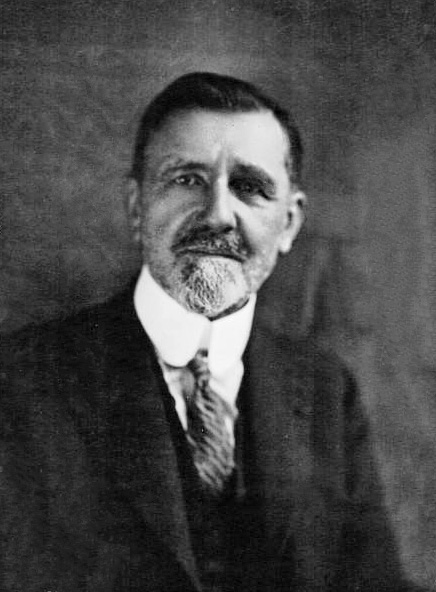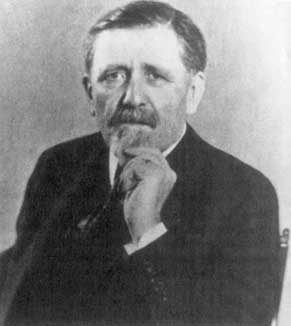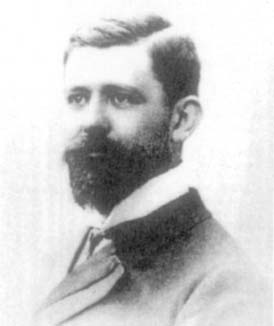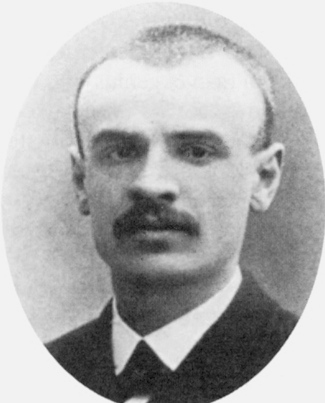<Back to Index>
- Mathematician and Politician Félix Édouard Justin Émile Borel, 1871
- Mathematician René - Louis Baire, 1874
PAGE SPONSOR



Félix Édouard Justin Émile Borel (7 January 1871 – 3 February 1956) was a French mathematician and politician.
Borel was born in Saint - Affrique, Aveyron. Along with René - Louis Baire and Henri Lebesgue, he was among the pioneers of measure theory and its application to probability theory. The concept of a Borel set is named in his honor. One of his books on probability introduced the amusing thought experiment that entered popular culture under the name infinite monkey theorem or the like. He also published a series of papers (1921 - 27) that first defined games of strategy.
In 1913 and 1914 he bridged the gap between hyperbolic geometry and special relativity with expository work.
In the 1920s, 1930s and 1940s he was active in politics. In 1922 he founded ISUP, the oldest French school for Statistics. From 1924 to 1936, he was a member of the French National Assembly. In 1925, he was Minister of Marine in the cabinet of fellow mathematician Paul Painlevé. During the Second World War he was a member of the French Resistance.
Borel died in Paris in 1956.
Besides the Centre Émile Borel at the Institut Henri Poincaré in Paris and a crater on the Moon, the following mathematical notions are named after him:
- Borel algebra,
- Borel's lemma,
- Borel's law of large numbers,
- Borel measure,
- Borel – Kolmogorov paradox,
- Borel – Cantelli lemma,
- Borel – Carathéodory theorem,
- Heine – Borel theorem,
- Borel summation.

René - Louis Baire (21 January 1874 – 5 July 1932) was a French mathematician most famous for his Baire category theorem, which helped to generalize and prove future theorems. His theory was published originally in his dissertation Sur les fonctions de variable réelles ("On the Functions of Real Variables") in 1899.
The son of a tailor, Baire was one of three children from a poor working class family in Paris. He started his studies when he entered the Lycée Lakanal through the use of a scholarship. In 1890, Baire completed his advanced classes and entered the special mathematics section of the Lycée Henri IV. While there, he prepared for and passed the entrance examination for the École Normale Supérieure and the École Polytechnique. He decided to attend the École Normale Supérieure in 1891. After receiving his three year degree, Baire proceeded toward his agregation. He did better than all the other students on the writing portion of the test but he did not pass the oral examination due to a lack of explanation and clarity in his lesson. After retaking the agregation and passing, he was assigned to teach at the Lycée in Bar-le-Duc. While there, Baire researched the concept of limits and discontinuity for his doctorate. He presented his thesis on March 24, 1899 and was awarded his doctorate. He continued to teach in lycées around France but was not happy teaching lower level mathematics. In 1901 Baire was appointed to the University of Montpellier as a "Maître de conférences". In 1904 he was awarded a Peccot Foundation Fellowship to spend a semester in a university and develop his skills as a professor. Baire chose to attend the Collège de France where he lectured on the subject of analysis. He was appointed to a university post in 1905 when he joined the Faculty of Science at Dijon. In 1907 he was promoted to Professor of Analysis at Dijon where he continued his research in analysis. He retired from Dijon in 1925 and spent his last years living in multiple hotels that he could afford with his meager pension.
Since he was young, Baire always had "delicate" health. He had developed problems with his esophagus before he attended school and he would occasionally experience severe attacks of agoraphobia. From time to time, his health would prevent him from working or studying. The bad spells became more frequent, immobilizing him for long periods of time. Over time, he had developed a kind of psychological disorder which made him unable to undertake work which required long periods of concentration. At times this would make his ability to research mathematics impossible. Between 1909 and 1914 this problem continually plagued him and his teaching duties became more and more difficult. He was given a leave of absence from Dijon due to all these breakdowns.
Baire's skill in mathematical analysis led him to study with other major names in analysis such as Vito Volterra and Lebesgue. In his dissertation Sur les fonctions de variable réelles ("On the Functions of Real Variables"), Baire studied a combination of set theory and analysis topics to arrive at the Baire Category Theorem and define the nowhere dense set. He then used these topics to prove the theorems of those he studied with and further the understanding of continuity. Among Baire’s other most important works are Théorie des nombres irrationels, des limites et de la continuité (Theory of Irrational Numbers, Limits, and Continuity) published in 1905 and both volumes of Leçons sur les théories générales de l’analyse (Lessons on the General Theory of Analysis) published in 1907 – 08.